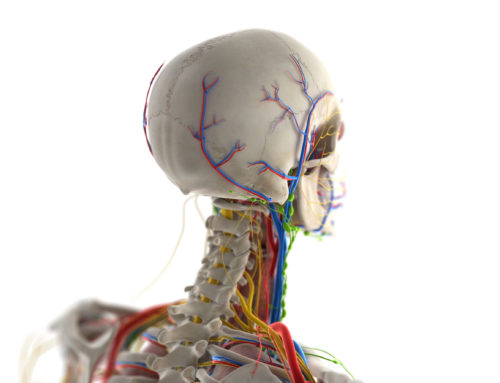
Sacroiliac joint pain and dysfunction
Sacroiliac joint pain has received much attention recently in orthopaedic circles. New clinical research reveals that 20 to 40% of low back pain sufferers have pain sourced from the sacroiliac joint.
The healthy sacroilia
c joint only allows approximately 4-5 degrees of motion on each side, but the area is rich in nerve supply, receiving innervation from the upper lumbar spine all the way through to the bottom of the sacral (tailbone) joints. Patients who experience sacroiliac joint pain suffer from a significant challenge in their enjoyment of activities of daily living.
Increasing Interest in Orthopaedics
The September 2014 edition of Spinal News International features an article by Steven R. Garfin MD “Recognizing and Managing Sacroiliac Joint Pain”. In this article, Dr. Garfin reflects upon the increased research interest in sacroiliac joint pain and concludes “Despite the fact we have ignored the sacroiliac joint in the past, the literature strongly supports the concept that the sacroiliac joint is a pain generator and can be treated effectively with surgery.”
Use Your Hammer?
Both orthopaedic surgeons and chiropractors are no strangers to the Maslow’s hammer concept “I suppose it is tempting, if the only tool you have is a hammer, to treat everything as if it were a nail.”, with orthopaedic surgeons desiring to assist patients through their skills of surgical intervention and chiropractors considering every patient walking through their doors as a candidate for spinal adjustment or manipulation, however my experience over the past 34 years has been that the ability of conservative chiropractic treatment to succeed in the management of sacroiliac joint pain is legendary. Additionally, manipulation of the sacroiliac joints with new instrumentation allows for a significant increase in the objectivity of diagnosis along with the expeditious normalization of sacroiliac joint function and decrease of sacroiliac joint pain.
Diagnosis
Traditionally, the diagnosis of sacroiliac joint pain includes a history with pain over the sacroiliac joint with activity or prolonged sitting. The examination rules out lumbar spine and hip joint sourced pain and relies upon three positive sacroiliac joint tests along with confirmatory sacroiliac joint injections under fluoroscopic control. The costs associated with just this diagnostic workup far exceeds a two week trial intervention in a chiropractic setting, and then add on the costs of surgery?
Consider This…
Interested in relief? Our chiropractor in Greenville, SC can help. Call Eastside Chiropractic, PA: 864-292-6777.
Why don’t more orthopedic surgeons consider a short term referral to a chiropractic provider for evaluation and management of sacroiliac joint pain? The answer is that here in Greenville SC some do, but the vast majority don’t because their training does not include chiropractic as a part of their management algorithm for the spine patient, or their experience with manipulation/mobilization may be jaundiced by poor experiences with physical therapists who may only sporadically manipulate and have limited training in the discipline. The busy life of an orthopedic surgeon doesn’t leave much time for investigating “alternative” methods of care, but my experience has shown that if a patient specifically asks about seeing a chiropractor, many surgeons are willing to oblige them rather than proceeding immediately to more invasive methods.
 Sacroiliac joint pain has variable causes, ranging from simple postural dysfunction to long term arthritic/aging changes. The causes of sacroiliac joint pain have everything to do with whether chiropractic intervention can resolve or merely manage the condition. That being said, the ability for conservative chiropractic care to help a patient quickly restore their quality of life through simple and affordable joint mobilization warrants further consideration by orthopaedic physicians. So, to those orthopaedic doctors who have read this far…the next time a patient arrives at your office complaining of symptoms which indicate possible sacroiliac joint involvement, consider engaging a competent chiropractic physician for a trial intervention to co-manage the case. You may just open the door to a stream of referrals from the pragmatic chiropractor who understands that your “hammer” may be just right for the patient in his office who needs help from someone elses tool box.
Sacroiliac joint pain has variable causes, ranging from simple postural dysfunction to long term arthritic/aging changes. The causes of sacroiliac joint pain have everything to do with whether chiropractic intervention can resolve or merely manage the condition. That being said, the ability for conservative chiropractic care to help a patient quickly restore their quality of life through simple and affordable joint mobilization warrants further consideration by orthopaedic physicians. So, to those orthopaedic doctors who have read this far…the next time a patient arrives at your office complaining of symptoms which indicate possible sacroiliac joint involvement, consider engaging a competent chiropractic physician for a trial intervention to co-manage the case. You may just open the door to a stream of referrals from the pragmatic chiropractor who understands that your “hammer” may be just right for the patient in his office who needs help from someone elses tool box.
Copyright: mybaitshop / 123RF Stock Photo
Learn more about Eastside Chiropractic, PA!
See what some of our Greenville chiropractic care patients have to say about our chiropractic services, or click here to read more of our chiropractor Greenville SC reviews from Google, Yelp and Facebook.




